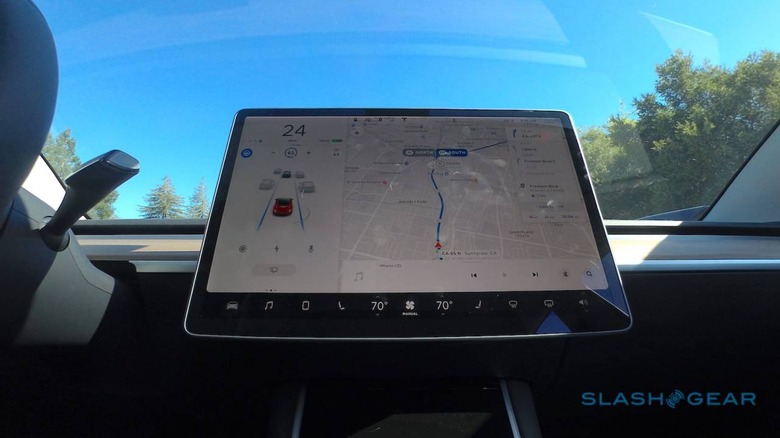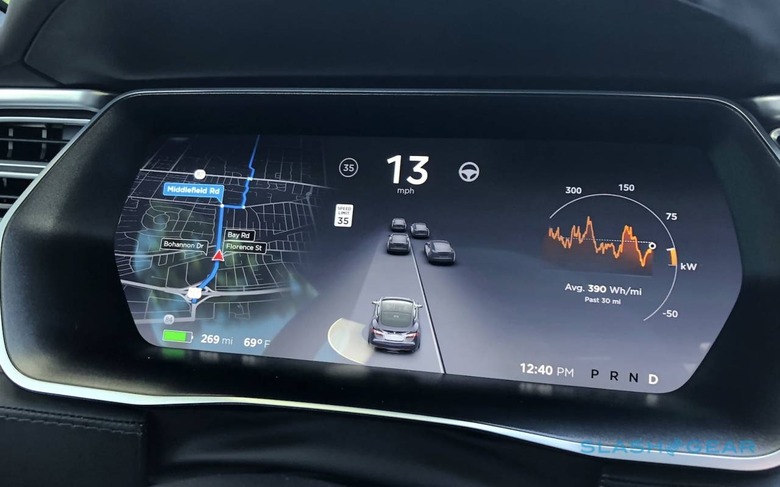Consumer Reports Is Mad At Tesla Autopilot. Again.
The latest version of Tesla Navigate on Autopilot finds itself in the crosshairs of Consumer Reports' criticism this week, with the testing organization singularly unconvinced that the automaker's promises of a "more seamless" drive hold up to scrutiny. The feature was tweaked earlier this year so that suitably-equipped EVs could automatically change lane while Autopilot was enabled.
Auto lane-changing has long been a feature of Autopilot, but it has required the driver to decide when to initiate the maneuver. The latest Navigate on Autopilot update, however, upends that. Instead, as long as the car knows the route the driver is trying to take, it is able to initiate its own lane changes.
Rather than the driver prompting the car to switch lane, the opposite is true: they're able to cancel a maneuver if they want to, but otherwise the Tesla will do it all itself. That, Consumer Reports now says, isn't as impressive as it sounds.
"In practice, we found that Navigate on Autopilot lagged far behind a human driver's skill set," the testing company concluded. "The feature cut off cars without leaving enough space and even passed other cars in ways that violate state laws, according to several law enforcement representatives CR interviewed for this report. As a result, the driver often had to prevent the system from making poor decisions."

There are a few elements to the complaint. One is that Navigate on Autopilot only requires enabling the auto-lane-change feature once: after that, there's no reminder that the car may choose to switch lanes.
Another criticism is how the car well the car chooses its moments to maneuver. One issue is that it would sometimes make lane changes that contravene local road laws, like passing on the right in some states. Another is how well the Tesla can identify a car approaching at speed from the rear. Testers apparently found that, at times, their EV would decide to change lane and thus cut off a much faster vehicle approaching in the next lane.
Even when the lane change is complete, Consumer Reports says, the Tesla can be frustrating to other motorists. "It is reluctant to merge in heavy traffic," one tester said, "but when it does, it often immediately applies the brakes to create space behind the follow car – this can be a rude surprise to the vehicle you cut off."
Tesla's relationship with Consumer Reports has been a troubled one. The organization has regularly criticized Tesla for different aspects of its vehicles, including build quality and how straightforward to repair the EVs are. Previous Consumer Reports testing has even prompted safety updates from the automaker, such as the improvement to stopping distance made in May of last year.

However nothing quite frustrates Consumer Reports like Autopilot. Tesla's driver assistance system has long been blamed for leaving owners over-confident in the capabilities of their vehicle, with testers previously demanding that it be renamed so as to help avoid confusion. Tesla, unsurprisingly, doesn't agree.
The automaker pointed to its own research, based on its internal testing and Early Access Program, of how its cars performed with the lane change confirmation system turned off. "Our team consistently reviews data from instances when drivers took over while the feature has been in use, and has found that when used properly both versions of Navigate on Autopilot offer comparable levels of safety," it argued.
As ever, Tesla fans are unlikely to be swayed by Consumer Reports' criticisms, while the testing company seems unmoved by the automaker's aggressive rollout of driver-assistance technologies. What may well tip the scales is any decision on further regulation of such systems. The NHTSA confirmed this week that it planned an investigation into ADAS (advanced driver assistance systems) that would particularly focus on engaging and disengaging, and how vehicles and human drivers interact.
